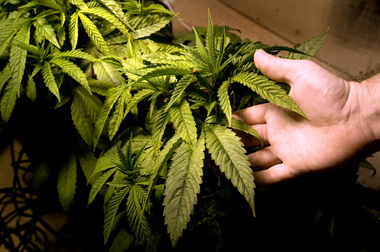Truth Seeker
New Member
Cannabis in Australia has become more potent over the years and contains high levels of tetrahydrocannabinol (THC), according to a study of samples confiscated from recreational users and growers.
The drug has an average THC content of just under 15 per cent, according to the study by University of New South Wales (UNSW) and University of Sydney researchers.
There is widespread international concern that cannabis containing high levels of THC could be associated with increased mental health risks, says study leader Dr Wendy Swift of the National Drug and Alcohol Research Centre at UNSW.
There is a strong lobby in the Netherlands to classify cannabis with 15 per cent or higher THC as a hard drug.
Dr Swift's team examined the content of 206 cannabis samples confiscated under the NSW cautioning scheme for recreational users found with 15g or less. They also examined 26 samples seized from large indoor and outdoor cultivation sites.
Both sets of samples had similar potency, according to the study, which is published in the international science journal PLOS ONE.
More than 40 per cent of the samples seized on the street and more than half seized from cultivation sites contained more than 15 per cent THC.
More than 85 per cent overall contained less than 0.1 per cent cannabidiol (CBD).
CBD does not get users high and is thought to counteract some of the negative effects of THC.
Dr Swift says the study is the first to demonstrate that, on average, cannabis in Australia is as powerful as samples measured in other countries.
"It also shows levels of CBD, which may ameliorate some of the harmful effects of THC, are extremely low.
"These results suggest the profile of cannabis currently used in Australia may make some users vulnerable to mental health problems."
More research is needed, however, to understand the full relevance of potency.
"We need to know more about the factors that affect how people respond to the drug," Dr Swift said.
"It is important that we have a national routine monitoring system to assess trends in the profile of cannabis and to better understand its relationship with health outcomes."

News Hawk- Truth Seeker 420 MAGAZINE ®
Source: ninemsn.com.au
Author: ninemsn.com.au
Contact: Contact Us
Website: Concern as Aussie cannabis gains potency
The drug has an average THC content of just under 15 per cent, according to the study by University of New South Wales (UNSW) and University of Sydney researchers.
There is widespread international concern that cannabis containing high levels of THC could be associated with increased mental health risks, says study leader Dr Wendy Swift of the National Drug and Alcohol Research Centre at UNSW.
There is a strong lobby in the Netherlands to classify cannabis with 15 per cent or higher THC as a hard drug.
Dr Swift's team examined the content of 206 cannabis samples confiscated under the NSW cautioning scheme for recreational users found with 15g or less. They also examined 26 samples seized from large indoor and outdoor cultivation sites.
Both sets of samples had similar potency, according to the study, which is published in the international science journal PLOS ONE.
More than 40 per cent of the samples seized on the street and more than half seized from cultivation sites contained more than 15 per cent THC.
More than 85 per cent overall contained less than 0.1 per cent cannabidiol (CBD).
CBD does not get users high and is thought to counteract some of the negative effects of THC.
Dr Swift says the study is the first to demonstrate that, on average, cannabis in Australia is as powerful as samples measured in other countries.
"It also shows levels of CBD, which may ameliorate some of the harmful effects of THC, are extremely low.
"These results suggest the profile of cannabis currently used in Australia may make some users vulnerable to mental health problems."
More research is needed, however, to understand the full relevance of potency.
"We need to know more about the factors that affect how people respond to the drug," Dr Swift said.
"It is important that we have a national routine monitoring system to assess trends in the profile of cannabis and to better understand its relationship with health outcomes."

News Hawk- Truth Seeker 420 MAGAZINE ®
Source: ninemsn.com.au
Author: ninemsn.com.au
Contact: Contact Us
Website: Concern as Aussie cannabis gains potency



 Yellow Journalism?
Yellow Journalism?